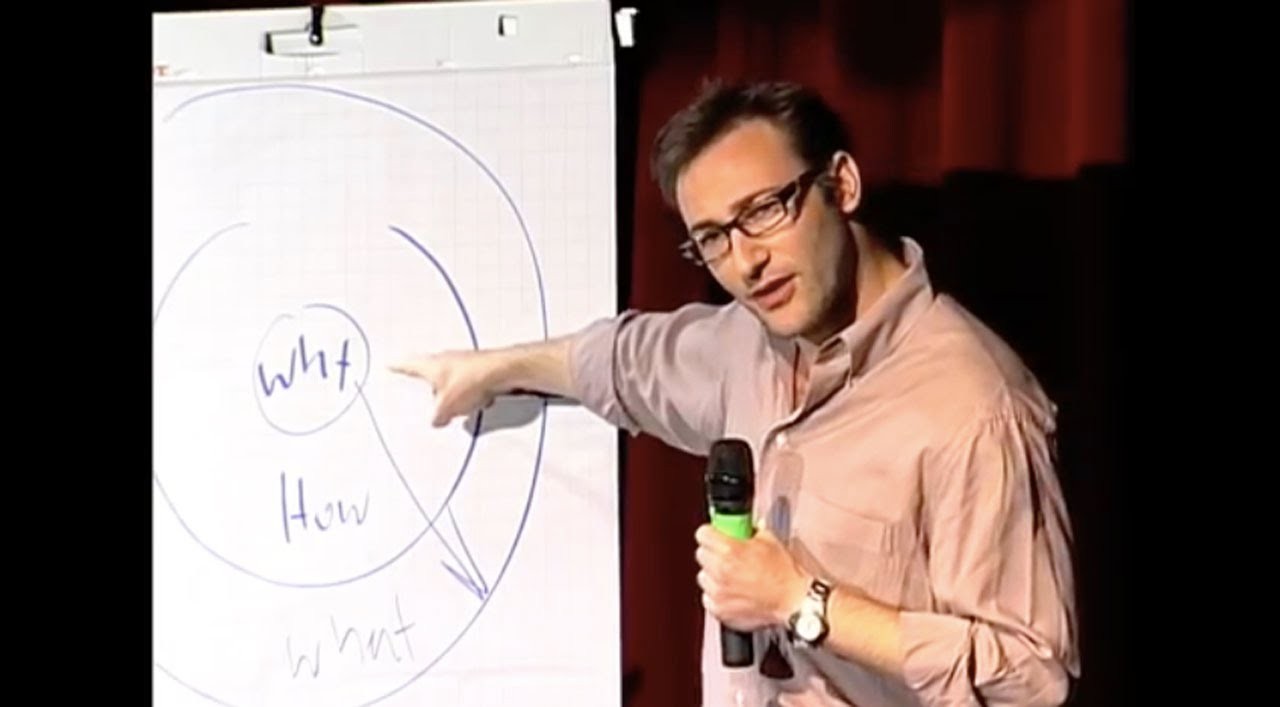Simon Sinek’s TED Talk, “How great leaders inspire action,” introducing the concept of “Start With Why,” has resonated with millions. The idea of focusing on purpose before product, on why you do something before what you do, is undeniably appealing. It offers a seemingly simple yet profound framework for leadership, marketing, and even personal motivation. The golden circle – Why, How, What – has become a ubiquitous model in business discussions, promising a path to inspiration and success.
 Simon Sinek's Golden Circle
Simon Sinek's Golden Circle
However, while the TED Talk provides an easily digestible and thought-provoking introduction, delving deeper into Sinek’s broader work, particularly his book, reveals a more complex and arguably less robust picture. The seemingly straightforward concept of “start with why” becomes entangled with oversimplified biology, selective examples, and a somewhat contradictory approach to authenticity and manipulation. Is “start with why” a genuinely insightful principle, or is it, as some critics suggest, a catchy but ultimately flawed theory?
One of the foundational arguments in Sinek’s framework is the biological basis of the golden circle. He posits that the “why,” “how,” and “what” correspond directly to different parts of the brain: the limbic system (responsible for emotions and behavior) and the neocortex (responsible for rational thought). The claim is that focusing on “why” speaks directly to the limbic brain, driving emotional connection and inspiring action on a primal level.
However, this neat neurological mapping is a significant oversimplification. Neuroscience doesn’t neatly divide brain functions in such a way. Attributing complex human behaviors like purchasing decisions or loyalty solely to the limbic system while dismissing the neocortex is a misleading representation of how the brain works. While emotions undoubtedly play a role in decision-making, they are intertwined with rational thought, not separate from it. To suggest that marketing with “why” bypasses rational thought and directly accesses some “ancient emotional lizard brain” is not only scientifically questionable but also potentially manipulative in its implications.
Furthermore, the concept of “start with why” as the sole determinant of success is another point of contention. Sinek’s narrative often relies on showcasing examples of companies and leaders who embody the “why” principle, such as Apple, Martin Luther King Jr., and Southwest Airlines. These examples are presented as evidence that focusing on purpose is the key to their success. However, this approach suffers from confirmation bias. It overlooks the myriad other factors that contribute to success, such as timing, resources, market conditions, innovative products, and effective execution. Attributing success solely to “why” ignores the complexity of reality and fails to acknowledge instances where companies with a strong “why” still fail, or companies without an explicitly articulated “why” achieve great success.
The inclusion of figures like Martin Luther King Jr. alongside corporations like Apple and Harley-Davidson also raises ethical questions. While King’s “why” – the fight for civil rights – was undeniably powerful and inspiring, equating it to the “why” of a for-profit corporation risks trivializing genuine social movements and reducing them to marketing strategies. Using the same framework to explain both civil rights and motorcycle sales blurs the lines between profound social change and consumerism, suggesting that emotional appeal is the primary driver in both contexts, regardless of the inherent differences in their purpose and impact.
Moreover, the concept of authenticity within “start with why” becomes somewhat convoluted. Sinek emphasizes the importance of genuine authenticity, arguing that manipulation leads to short-term gains but ultimately erodes trust and loyalty. However, the very act of consciously crafting a “why” and using it to inspire customers can be perceived as a form of manipulation, even if the “why” is genuinely held. The line between inspiration and manipulation becomes blurry when businesses are advised to “play the inspiration game” to gain customer loyalty and ultimately, revenue. If the goal is still financial success, even when framed through the lens of “why,” the authenticity can feel manufactured, a strategic tool rather than a deeply held principle.
Another critique stems from the apparent lack of cultural nuance in the “start with why” framework. Sinek’s examples and perspectives often seem rooted in a Western, particularly American, individualistic worldview. Claims about the US being an “enterprising, WHY-focused country” and generalizations about immigrant success based on an “enterprising mindset” demonstrate a limited understanding of diverse cultural norms and societal structures. The idea that everyone is motivated by the same “why” and that success is universally defined by individualistic achievement ignores the collectivist values and different motivational drivers prevalent in many cultures around the world.
Finally, the focus on “why” often seems to prioritize leadership at the expense of the contributions of employees at all levels. The narrative frequently centers on visionary CEOs and their “why,” implying that the “how” and “what” people – the employees executing the vision – are merely implementers of the leader’s purpose. This hierarchical perspective risks devaluing the creativity, passion, and initiative that can arise from all levels of an organization. While leadership is crucial, a truly inspiring “why” should empower and engage everyone within the organization, not just serve as a top-down directive.
In conclusion, while the “start with why” concept, popularized by Simon Sinek, offers an intriguing framework for thinking about purpose and motivation, a deeper examination reveals significant limitations and potential flaws. The neurological basis is oversimplified, the emphasis on “why” as the sole driver of success is reductionist, the ethical implications of equating social movements and consumerism are questionable, the concept of authenticity becomes ambiguous, the cultural perspective is narrow, and the focus on leadership can overshadow the contributions of others.
For those seeking a more nuanced and evidence-based understanding of decision-making and behavior, exploring works like Daniel Kahneman’s “Thinking, Fast and Slow” might offer a more robust and less prescriptive approach. While “start with why” provides a compelling narrative, critical analysis is essential to discern its genuine insights from its oversimplifications and potential shortcomings. The golden circle may glitter, but closer inspection reveals it might not be as purely golden as it initially appears.